
The Dragon Prince is one of the best Netflix originals by far. Originally released in 2018, the series currently has three seasons out, with four more planned, and season four on its way. An animated fantasy epic that has already found its footing, The Dragon Prince follows two princes and the elven assassin sent to kill them in a quest to bring peace to their warring world.
Alongside the two princes, Callum and Ezran, and their assassin friend, Rayla, the series also follows siblings Soren and Claudia, tasked by their father, Lord Viren, to kill — I mean, retrieve the princes at any cost. Other lovable side characters filter in and out over the course of the first three seasons, with the world steadily built along the main trio and the evolving plot.
Full of magic, adventure, and growth, the series is already a knockout with much more on the way. But for now, let's settle down and see why The Dragon Prince is a fantasy series worth your time — and worth being known as one of Netflix's most bingeable series.
1) Demands Your Attention
The Dragon Prince is often a blink-and-you'll-miss-it series. Not in anything that is crucial to the plot, normally, but the seeds for everything are sown very early. For example, the warped Lord Viren is first introduced inspecting a mirror in his room with his staff off to the side, but still visibly on screen. One could think it's a way to establish he's a mage and can be a little self centred — and it is — but season two and three reveal the true, darker secrets laying behind the mirror's glossy surface. And the secrets of Viren's staff have yet to be fully unfolded, although the beginning of season three hints at a crucial connection.

Another moment is in season three, when there's been a political usurpation of the throne and characters are planning what to do next. A throw away line of going to their kingdom's closet ally, Duren, for help leads to an epic reveal in the finale — but only able to be fully appreciated if you catch it.
The end credit art that changes with every episode contributes to this. Sometimes silly and sometimes heartfelt, the art posted along the credits can also feature characters in their journey and set things up for future episodes, such as when tracker Corvus is following our unlikely trio off screen for most of season one and season two.
The show is still able to be enjoyed by less than engrossed viewers, but the attention to detail is a wonderful reward that adds to its rewatch value, and first time charm.

2) The Characters
Overall, The Dragon Prince has a surprisingly small main cast, with everyone but the main trio rotating in and out at different intervals. However, the show is brilliant at handling its ensemble style storytelling, and you feel as though you know characters quite well just moments after meeting them. This relatable quality and high diversity of archetypes — loveable rogue, a morally ambiguous himbo, sweet boys and snarky girls, a tortured political advisor — means that while all characters are endearing, any can easily and understandably be a favourite.

The characters also drive the plot forward. Both the heroes and antagonists are constantly active and making choices that steadily progress the plot and the characters' emotional arcs. Ezran goes from a mischievous, sweet-hearted child to a true hearted king tested by battle. Rayla is thrown into chaos when she leaves behind everything she knew only to find a new home in her former sworn enemies. Unsure of himself Callum grows to find his worth alongside the world's changing understanding of its magic system. Even Claudia and Soren, who at first glance in season one seem like nothing more than vaguely evil comic relief, end up becoming some of the most tragic and compelling characters by the series' end.
Other standouts from the main cast are the mysterious and starry elf Aaravos, whose masterplan is yet to be revealed; General Amaya, the boys' warrior aunt who quickly signed her way into our hearts (and her soon-to-be girlfriend's); and King Harrow, the princes' father struggling with the weight of his past when Moonshadow elves come to assassinate him.
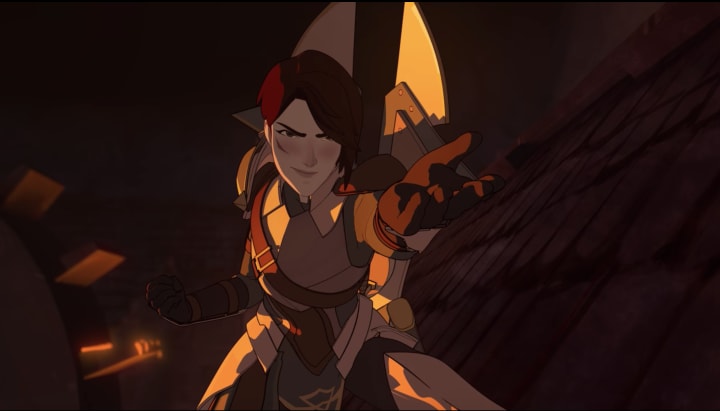
I would also be remiss to not draw attention to the series' intersectional diversity at many points in the series. The show features a broad cast of characters of colour, including the two main princes who are both mixed (Ezran is Black and Asian, and Callum is Asian and white), across a wide range of ethical and magical divides. There is also LGBTQ+ rep, featuring three same-sex couples (two married, and one developing), and a nonbinary character (a Katolian sign language interpreter named Kazi). Likewise, the show also develops its disabled characters, such as Amaya, who is Deaf and mute; a blind pirate with a seeing-eye parrot, and many others.

Perhaps most surprisingly, the show also talks about diverse families. Callum is the king's stepson, with King Harrow being a devoted father, even if the two struggle in how to be open with one another. Although half brothers, Ezran and Callum never see each other as anything other than family, and neither does anyone else. Claudia in particular has a heart-wrenching arc of what it's like to be a child of divorce, and the ways parents can fail and reconcile with their children are readily explored in various families. The two main sibling bonds are realistic and well developed, leading to interesting and engaging dynamics that a range of families and children can relate to.
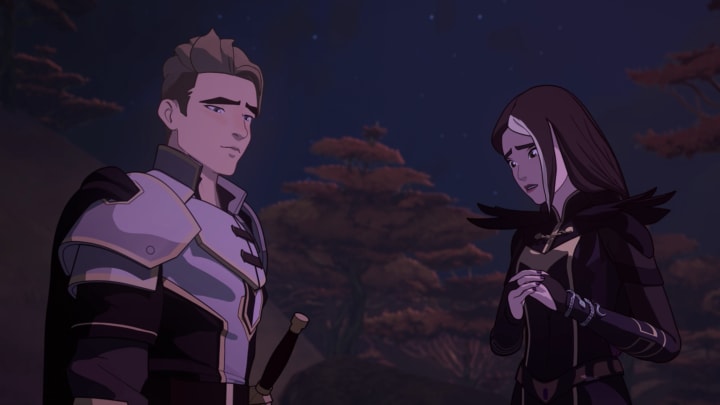
3) Shades of Grey
One of the best thing about the series' characters, however, is how most of them can be seen in shades of grey. The villains occasionally have a point or feel remorse while still digging themselves deeper into nefarious schemes. This is reflected even in the magic systems, where dark magic takes the essence of magical creatures to be channelled into spells, versus primal magic born out of a connection to nature that humans have been barred from for thousands of years.
Characters are also continually forced into situations where there is no clear cut right answer. Do you use dark magic and kill a creature to save a country from famine? It seems like an easy yes, especially when said magical creature looks like a monster and cannot talk. But the show calls attention to the slippery slope of dehumanization: "Does it think? Does it feel? Does it have a family?" Many of the show's dark mages don't see elves, who want and talk and visibly look similar to humans, as people either.
The complexity is awarded to the elven characters, too. Elven punishments for 'failure' are harsh, with harsher still for those who prove themselves unworthy. In the first episode, Rayla is a young and untested assassin who cannot kill a human guard out on patrol, leading to her team being discovered. When she tries to defend herself by citing the emotional reactions we've come to expect — the guard was scared and hadn't done anything to her, how could she take his life? — her mentor and father figure Runaan quickly shuts her down. "You let him live, but you've killed us all" is a notion that haunts Rayla for the rest of the series, and seemingly even into the unreleased season four.
Although the show has (mostly) clear cut heroes and villains, the heroes are deeply flawed and the villains are often sympathetic, if not occasionally redeemed. It is a great facet of the show for getting kids (and adults) to think about broader ethical questions while also not going over younger viewers' heads completely.
4) Worldbuilding
Among stunning character designs, the show's worldbuilding is also a highlight. The human kingdoms and the magical land of Xadia are both interesting and unique in their own ways. Magic roars to life even before our main trio reaches Xadia, featured in armour, enchanted weapons, and a growing assortment of spells.

At the same time, there's never so much being added that it becomes difficult to remember or understand what's going on. The world's magic system is simple, with magic being drawn from the six main primal sources: Moon, Sky, Ocean, Earth, Sun, and Stars. Dark magic consists of anything else, taken from magical creatures, whether it's horns, ashes, or even eyeballs.
The elves and dragons are connected to their primal sources, with the elves bearing fancy but memorable names. As of season three, we've met Moonshadow, Sunfire, Skywing, and Startouch elves.

The world has an understandable political structure, with the Dragon Royal Family, the other human kings and queens, as well as the Sunfire queen and her younger sister. All operate somewhat independently of each other, promising that even if the heroes achieve their dream of peace, navigating a life in the realm of post-war politics won't be easy, or simple.
The scenery of the show is also stunning, with a few examples below.
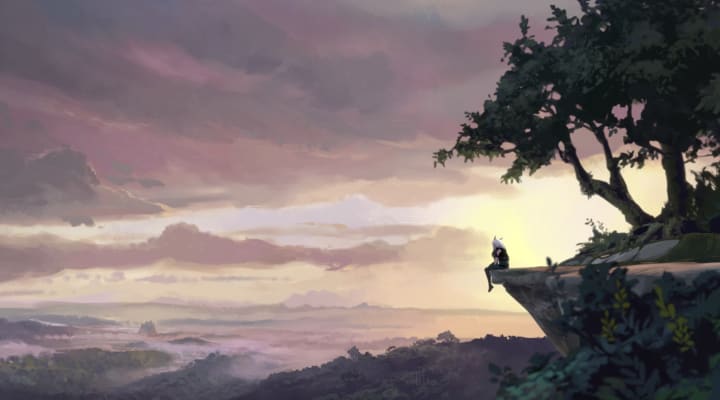
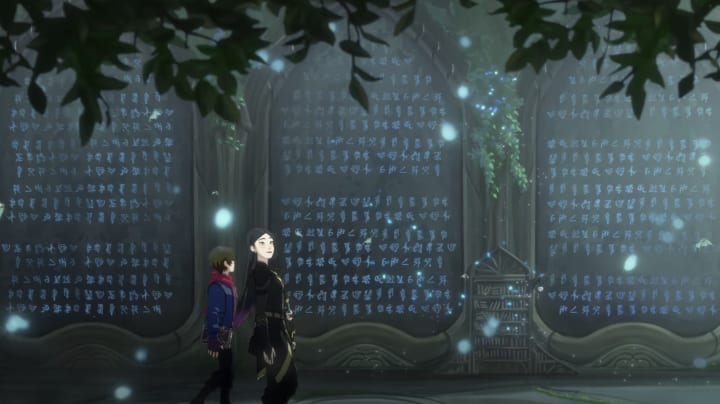

5) Artful Subversion
The series also subverts expectations — in a good way, I promise. Warning: some mild spoilers for the end of season two in regards to Ezran, and for a romantic relationship in season three. If you have been convinced to watch the series but don't want anything spoiled, leave now, and then come back to this article.
When watching the show for the first time, I expected it to follow a certain set of expectations. And while predictable perhaps, in the character arcs, even that was refreshing. Finally, a show is content to guide the audience along and deliver on the arcs that were promised, knowing that the execution is the key rather than some flashy but out of nowhere end result.

Likewise, the show continued to surprise me in small ways. The storyline of an amputee character was resolved beautifully, given enough time; what could have been the dreaded liar revealed plotline, twice, was dealt with in a reasonable and efficient way, never overstaying its welcome or dragging up unnecessary drama.
But now onto the subversions that strengthened the show the most, and the mild spoilers that they entail. By far the one that surprised and excited me the most was the decision made in regards to Ezran's arc in late stage season two.

As one part of the main trio, I expected that Ezran would stay with his brother and their friend together until the kids achieved their goal of restoring peace to their land by completing their quest. Throughout season one and season two, Callum and Rayla had made most of the big decisions as they were older and the group's defenders, with Ezran taking on a more passive, sometimes peacemaking role. What could've been a slight character flaw of Ezran being more of a follower was turned into a quiet buildup to his main arc for season three. Upon learning that his father has fallen, Ezran chooses to break away from the main group at the end of season two to go back home and be king. It was heartbreaking in its own way, but fit the character and the story perfectly, setting up some truly exciting avenues for season three. It was an amazing example of how a show can subvert expectations for the genre while respecting their own unique narrative, leading to a surprising twist that also feels earned and exciting.
The second subversion that stood out to me was the relationship between Callum and Rayla. Although initially not planned to end up together, the crew realized the organic chemistry growing between them in season two and leaned into a possible romance, picking up steam now that the two were going to be travelling alone in season three. However, Callum and Rayla's romance is sweet, rooted in friendship and a genuine admiration for each other, and they get together with very little fuss and only a bit of teenage awkwardness. What surprised me most of all, though, was that they get together around the midpoint of season three, allowing for the remaining episodes of the season to showcase the few changes to their relationship now that they are, in Callum's words, "a thing," while also showing that they are still first and foremost a team with a strong platonic bond. It was adorable, and I loved every second of it.

Conclusion
With season four coming later this year after a long hiatus, The Dragon Prince is worth checking out if you're a lover of fantasy, well-told stories, and lovable characters. Each season consists of only nine episodes, the current tally up to just 27 episodes as a whole. Easily bingeable and enjoyable for all ages, I cannot recommend this series enough — and continue to be nothing but excited and eager to see where it could go next.
About the Creator
TC13
Aspiring author and mythology enthusiast with a deep love for fantasy. Writes from a queer nb (they/them) perspective.


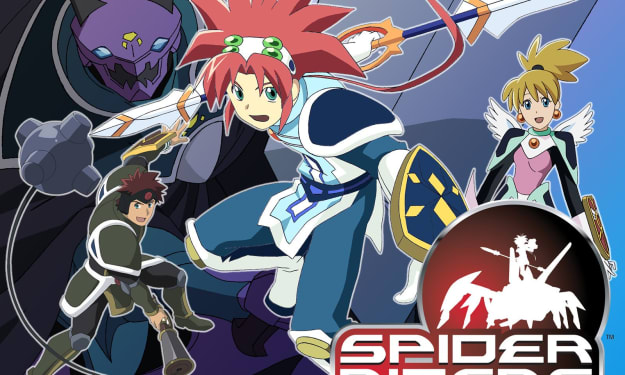



Comments
There are no comments for this story
Be the first to respond and start the conversation.